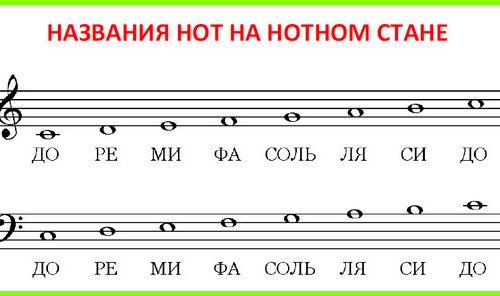
Small minor, augmented and diminished seventh chords (Lesson 10)
So let’s continue. In the last lesson, we talked about the major and minor major seventh chords. The best way to learn how to build all other types of seventh chords is to imagine them as a modified clone of the minor major seventh chord, or the dominant seventh chord (as it is also called).
The content of the article
- Small minor seventh chord
- Augmented seventh chord
- Diminished seventh chords
Small minor seventh chord
To obtain minor minor seventh chord from Do (Cm7), you need to lower the Mi, or third, by half a tone in a small major seventh chord (dominant seventh chord) from Do (C7) and turn it into an E-flat; you have already done this, going from a triad in C major (C) to C minor (Cm).

Perhaps you were expecting a minor seventh chord to be built on top of a major seventh chord in which the third should be lowered. Yes, you are right: the musical logic in this case is somewhat lame, but there is a pleasant side to all this: if we take the dominant seventh chord as the basis for different seventh chords, then the rules for constructing minor or augmented ones completely coincide with the rules for the corresponding triads. (The only exception is the diminished seventh chord; however, its construction is very logical and you won’t have any problems with it.)
Play different types of small minor seventh chords, get used to its unusual, colorful sound.
 It sounds very colorful in works where there is just a minor triad. Try replacing it with a seventh chord and you will see how the piece of music will play in a new way. Let’s take at least the melody from the “Umbrellas of Cherbourg” already familiar to you, let’s try to add a little color to it:
It sounds very colorful in works where there is just a minor triad. Try replacing it with a seventh chord and you will see how the piece of music will play in a new way. Let’s take at least the melody from the “Umbrellas of Cherbourg” already familiar to you, let’s try to add a little color to it:
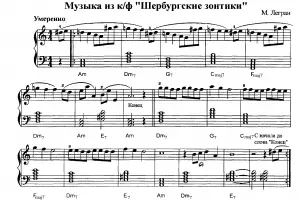
Augmented seventh chord
In modern songs augmented seventh chords are rare. It consists of an enlarged triad, to which is added a small seventh from the main tone. That is, if we take a small major seventh chord and raise the fifth tone in it by half a tone, then we will get an increased seventh chord.
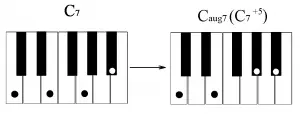
Depending on how much you have mastered the principle of building an augmented seventh chord, play as many more of these chords as you deem necessary. Here are some of those chords:

Diminished seventh chords
We now move on to the last and perhaps the least common of the seventh chords – reduced. As a basis for its construction, again, it is best to use a small major seventh chord (dominant seventh chord). You need to lower its third, fifth and seventh, like this:
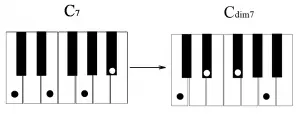


Incidentally, it’s interesting to note that the three diminished seventh chords above are all you should be familiar with. The nine remaining diminished seventh chords are composed of the same notes as these three. For example, Gdim7 consists of the notes G, B flat, D flat and E, that is, the same notes as Edim7, but in circulation; Ebdim7 consists of the same notes as Cdim7 (E-flat, G-flat, A and C), again in circulation.
Each of the three diminished seventh chords above can be played in four ways, turning each of its notes into the root in turn; in total, twelve different seventh chords are obtained, that is, all possible. This is the only chord where every note can be turned into a root, and in such a way that all other notes remain the same, and the whole chord remains the same diminished seventh chord!
The following illustration will help you better understand the meaning of what has been said. Play all the chords given here: 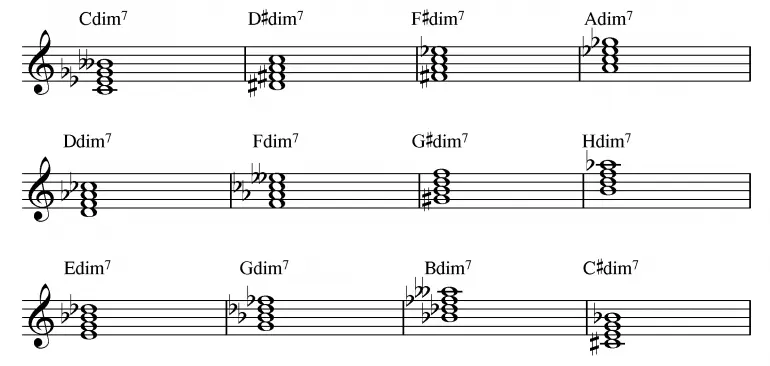 Everything seems to be
Everything seems to be 



